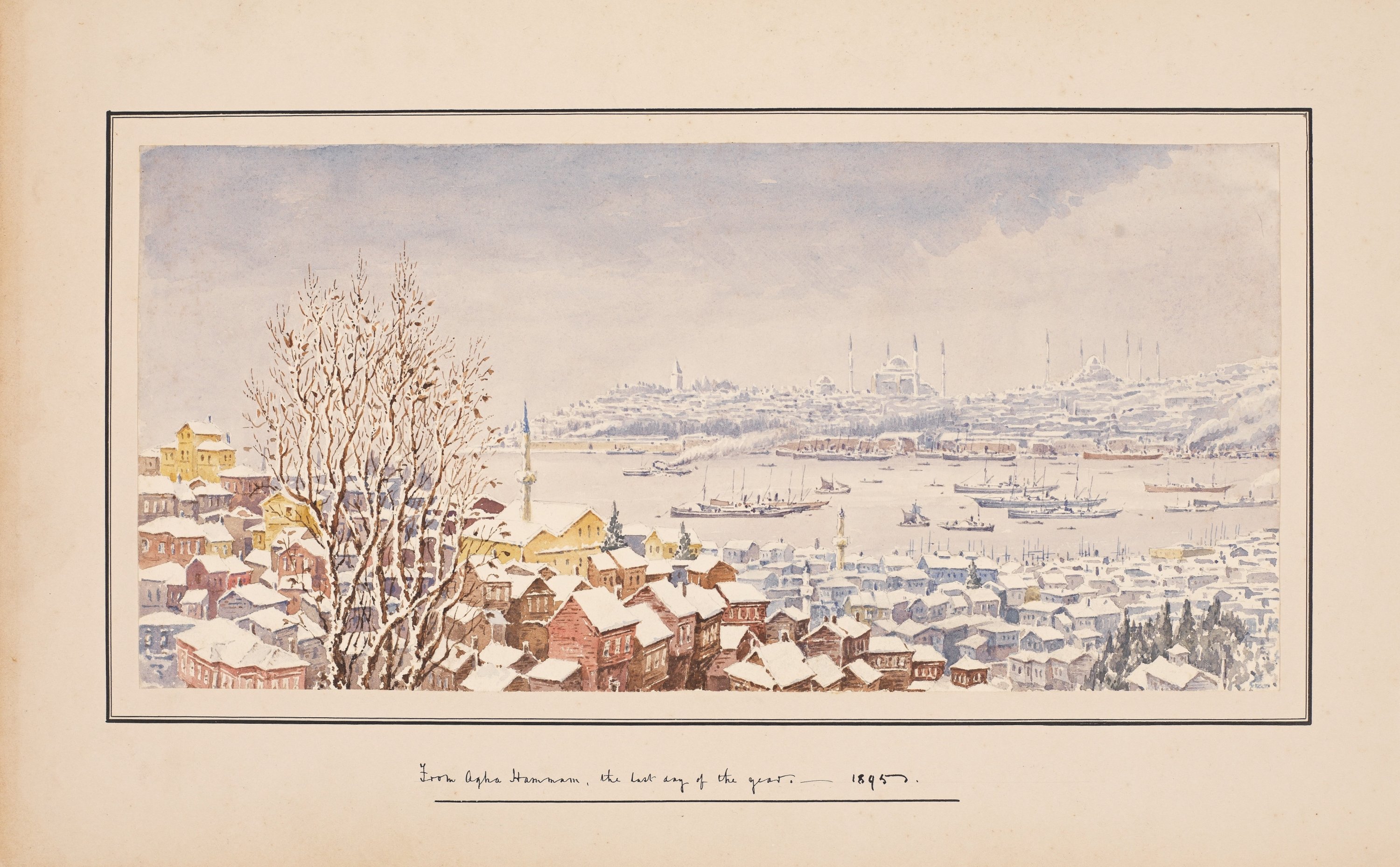© Turkuvaz Haberleşme ve Yayıncılık 2026
Meşher, Istanbul's leading interdisciplinary art space, is hosting a new exhibition, portraying Istanbul's iconic skyline from one end to the other with the "Istanbul As Far As the Eye Can See: Views Across Five Centuries."
Featuring a diverse collection of rare works from the Ömer Koç Collection, the exhibition spans five centuries, covering the period from the Ottoman capital in the 15th century to the first quarter of the 20th century. The exhibition, curated by Şeyda Çetin and Ebru Esra Satıcı, opened its doors on Sept. 20.
With over 100 works on display, the exhibition offers panoramic and wide-angle representations of Istanbul, some of which are being exhibited in Istanbul for the first time. The artworks include engravings, rare books, oil paintings and photographs, providing a rich visual record of the city.

The creators of the exhibited works also represent a wide range of backgrounds, including captains, travelers, soldiers, diplomats, writers, painters, photographers, architects and urban planners from Western perspectives. These artworks, created for various purposes, whether political, military or aesthetic, showcase different techniques and styles. Accompanying the visual representations are excerpts from written sources that shed light on the diplomatic relations of their time, the city's transformations, its multicultural fabric and social life.
These excerpts create a dialogue between the perspectives of Western artists and the artistic productions of Ottoman-Turkish literature from the 19th and early 20th centuries.
Notable works in the exhibition include the "Istanbul Panorama" based on sketches by English artist Henry Aston Barker in 1799, an engraving from 1741 by Philipp Franz von Gudenus, who served as a secretary at the Swedish Embassy in Istanbul, and Joseph Schranz's panorama of the Bosporus from the Black Sea to the Marmara Sea.
Additionally, visitors can view the signed album containing the May 1854 photograph of Bayezid Tower taken by James Robertson, the artist renowned for capturing some of the earliest 360-degree panoramic photographs of Istanbul.
The "Istanbul As Far As the Eye Can See: Views Across Five Centuries" exhibition features panoramic artworks that allow viewers to explore the city from end to end, revealing intriguing details along the way. Within these panoramic views, locals in traditional attire, women traveling in ox carts, Westerners identified by their hats, children and the city's four-legged inhabitants all play a significant role in completing the silhouette of Istanbul.
Curators Şeyda Çetin and Ebru Esra Satıcı shared their thoughts on the exhibition spread across three floors: "When selecting the artworks for the exhibition, we made sure to include views from various parts and neighborhoods of Istanbul. From the oldest piece, Hartmann Schedel's 'Liber chronicarum' ('Nuremberg Chronicle') from 1493, to the more recent album featuring original designs and artwork by Alexandre V. Pankoff from 1922-1924, we are presenting over 100 works at Meşher. The highlighted themes and stories are not strictly separated but rather complement and enrich each other. We believe that revealing the relationships between the artworks, rather than evaluating them based on their eras and techniques, contributes to a deeper understanding of this multifaceted city."
Nilüfer H. Konuk, director of Meşher, expressed her desire for the exhibition to reach a broad audience, stating, "Some of these valuable works, such as the earliest printed copies, the only surviving copies to this day, or pioneering examples of their time, are being exhibited in Istanbul for the first time. We are delighted to bring these rare pieces from Ömer Koç's esteemed collection to a wide audience at Meşher."
